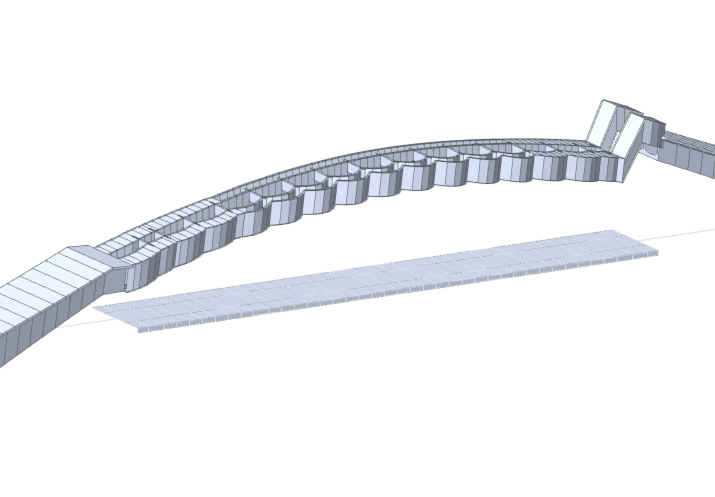Happy New years 🌞 civil engineers . This is CoBen!! 👬
It's time for a review, as usual. Do you remember Offset function in CIVIL NX?
Let me reiterate. You cannot apply a Beam End Offset at the same time when a Section Offset is in place. It is not possible to apply Offsets simultaneously.
For more details, you can click on 'Offset function in CIVIL NX' to check it out!
Then let's move on to today's topic.
Today, we'll explore 'When modeling considering the construction stage in MIDAS CIVIL NX, whether to select Deformed or Original for the boundary condition of the Elastic Link'. Many users are modeling considering the construction stage, and at this time, there is a concern about whether to choose Deformed or Original when activating or deactivating the boundary condition of the Elastic Link.
Today's question: “During the construction stage, should the boundary condition of the Elastic link be set to Deformed or Original?”
We're going to share the reason for that today.
When activating the boundary condition, apply Original and Deformed by considering the difference in the position of the nodes.
Try this simple and useful method to use MIDAS CIVIL NX more easily and effectively!
First, please check the corresponding model.
 Modeling Example
Modeling Example
This model is in the construction stage analysis, with a concrete slab created on top of a steel box. During the slab creation, the ‘Deformed’ option of the Elastic Link was used, but in this stage, the slab is positioned far below the top of the steel box.
On the other hand, choosing the ‘Original’ option seems to render the shape correctly, but the reaction and sectional force results appear to be more appropriate with the ‘Deformed’ option. Therefore, there has been difficulty in deciding whether to select Original or Deformed.
The displacement shape displayed on the screen is an exaggerated form, which is the actual displacement multiplied by a scale factor. To view the displacement shape in actual scale, the corresponding option needs to be set.
.png?width=481&height=650&name=Real%20Displacement%20(Auto-Scale%20Off).png) Real Displacement (Auto-Scale Off)
Real Displacement (Auto-Scale Off)
Additionally, when activating boundary conditions during the construction phase, the ‘Original’ option applies a load that restores the nodes to their initial positions, creating additional member forces, while the ‘Deformed’ option creates boundary conditions as is, based on the displaced positions of the nodes.
Thus, under the Deformed option, no additional member forces are generated.
From the perspective of member forces that match the actual construction of the structure, it is appropriate to analyze using the Deformed option. Since this does not forcibly apply displacement to the structure, it is common to apply the displacement occurring after analysis with the Deformed option with camber.
Pretty simple, isn’t it?
This small tip for MIDAS CIVIL NX will make your work much easier. Now become a wizard of the 'Boundary Condition for Elastic Link' while using MIDAS CIVIL NX more effectively! 🎩🔮
 Get Started midas Civil
Get Started midas Civil
 Featured blog of this week
Featured blog of this week





